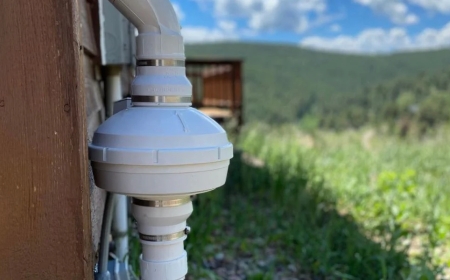Advancing the Nursing Profession Through Practical Education and Leadership Training
The nursing profession continues to evolve in response to rapidly changing healthcare systems, patient needs, and global challenges. As frontline professionals, nurses must stay equipped with current knowledge, adaptable skills, and the ability to lead within diverse healthcare environments. Traditional classroom-based nursing education is no longer sufficient for preparing professionals to handle this dynamic field. Innovative, practice-centered programs are reshaping the educational journeyand Capella Universitys FlexPath model is at the forefront of this shift.
Throughcapella flexpath assessments, students are immersed in a learning model that emphasizes real-world application over rote memorization. Competency-based education allows students to progress at their own pace while demonstrating mastery through personalized, meaningful assignments. These assessments arent genericthey are structured to mirror the complexities and nuances of modern nursing practice.
In this article, well explore how FlexPath nurtures key nursing competencies in public health, clinical leadership, and care coordination. By integrating experiential learning with flexible timelines, the model delivers an education that is both transformative and relevant to todays healthcare demands.
Public Health in Nursing: Addressing Community-Level Concerns
The connection between population health and nursing is stronger than ever. Whether working in hospitals or community clinics, nurses are on the front lines of public healthpromoting wellness, preventing illness, and addressing the social determinants that impact health outcomes. But the challenges they face, from vaccine misinformation to chronic illness prevalence, require both a strategic and empathetic response.
To meet this need, Capellas curriculum includes assessments likenurs fpx 4045 assessment 5, which engages students in the development of a community health improvement plan. This project requires the nurse to examine a real-world health issue, conduct community assessments, and propose a comprehensive intervention tailored to the populations unique needs.
For instance, a student may focus on the increasing incidence of type 2 diabetes in low-income neighborhoods. Their plan might involve collaborating with local grocery stores and fitness centers to create access to healthier food and exercise options, while also developing culturally appropriate educational campaigns. Another student may identify high school students as a vulnerable group and develop a mental health awareness program that includes peer support, counseling access, and stress management workshops.
Through this work, nurses gain the ability to:
-
Evaluate community-level data
-
Recognize disparities and barriers to care
-
Design practical interventions with measurable outcomes
-
Partner with local organizations for implementation
These are not abstract exercises. They allow students to apply what theyre learning to their own communities, fostering a sense of engagement and purpose. Public health in nursing becomes less of a theoretical concept and more of a hands-on responsibilityempowering nurses to advocate beyond the bedside.
Building Leadership Capacity in Clinical Practice
As healthcare organizations face staffing shortages, shifting policies, and increasing patient acuity, strong nursing leadership is needed more than ever. Clinical leadership is no longer confined to management roles; it is a core expectation for all nurses who hope to drive change, inspire teams, and maintain high standards of care.
Capellas approach to cultivating leadership is both strategic and grounded in daily nursing realities. One of the most impactful projects within this framework isnurs fpx 4065 assessment 4. In this assessment, students are asked to identify a leadership or communication issue within their workplace and propose a solution that is supported by nursing leadership theories.
Consider a nurse working in an emergency department who notices frequent miscommunication during shift changes, leading to medication errors. They might apply a transformational leadership model to propose a team-based communication protocol, involving training, simulation, and feedback loops. Or perhaps a nurse on a surgical floor identifies high turnover rates linked to burnout. Their plan could incorporate the servant leadership model, focusing on staff support initiatives, resilience training, and peer mentorship programs.
What makes this assessment so valuable is its real-world application. It enables nurses to:
-
Identify and analyze practical challenges
-
Select appropriate leadership models
-
Engage in critical self-reflection
-
Develop interpersonal and team-building strategies
Leadership isnt taught in isolationit is experienced through problem-solving. As students navigate these assessments, they gain confidence in their ability to lead change and influence outcomes, regardless of their position or title. This nurtures a generation of proactive, solution-driven nurses who can serve as the backbone of healthcare improvement efforts.
Learning That Reflects the Nurse's Real World
What sets FlexPath apart from traditional nursing programs is its deep integration of personal experience. Assessments are not arbitrarythey are often grounded in the students current clinical environment. Nurses use their existing workplace challenges to frame their academic work, making every project more relevant and impactful.
A nurse in home health may develop an intervention to improve patient medication adherence. Another in labor and delivery might build an educational tool to support postpartum mental health screening. Each project becomes a step toward refining not just theoretical understanding, but clinical effectiveness.
FlexPaths structure allows learners to:
-
Learn at their own pace without sacrificing quality
-
Apply new concepts immediately in their work settings
-
Create tangible solutions that benefit their organizations
-
Build a professional portfolio that demonstrates growth
By blending academic expectations with clinical realities, this model not only strengthens student engagementit accelerates professional development. Nurses emerge with a sharper clinical judgment, stronger leadership presence, and greater appreciation for interdisciplinary care.
Conclusion: Coordinated Care as the Hallmark of Nursing Competence
Todays patients often receive treatment from multiple providers across various settings. Without effective care coordination, they face a higher risk of complications, miscommunication, and dissatisfaction. Nurses play a pivotal role in ensuring continuitybridging gaps between providers, advocating for patient needs, and guiding individuals through their healthcare journey.
Thenurs fpx 4905 assessment 2emphasizes the critical nature of this responsibility. As a capstone assessment, it requires students to develop a detailed care coordination plan for a patient with complex health concerns. This includes identifying interdisciplinary needs, building patient-centered goals, and addressing systemic and individual barriers.
For example, a nurse may create a plan for an elderly patient with congestive heart failure and early-stage dementia. The plan might include regular telehealth visits, medication management tools, caregiver education, and partnerships with a local memory care clinic. It could also involve social services for transportation and meal deliveryrecognizing that health is influenced by far more than just medical interventions.
This assessment tests a students ability to:
-
Synthesize clinical and social knowledge
-
Plan ethically and holistically
-
Integrate resources and team input effectively
-
Communicate across disciplines and with families
Completing this project affirms the nurses readiness for advanced roles. It symbolizes the transition from student to clinical strategist, capable of navigating complex systems and leading comprehensive care.
































